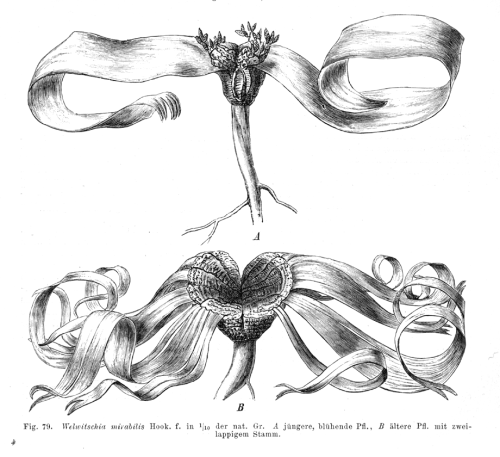#gymnosperm
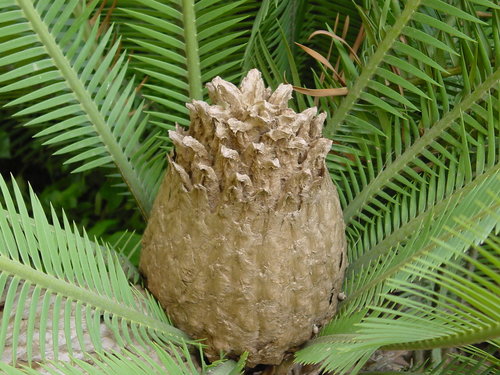
When it comes to insect pollination, flowering plants get all of the attention. However, flowers aren’t the only game in town. More and more we are beginning to appreciate the role insects play in the pollination of some gymnosperm lineages. For instance, did you know that many cycad species utilize insects as pollen vectors? The ways in which these charismatic gymnosperms entice insects is absolutely fascinating and well worth understanding in more detail.
Cycads or cycad-like plants were some of the earliest gymnosperm lineages to arise on this planet. They did so long before familiar insects like bees, wasps, and butterflies came onto the scene. It had long been assumed that, like a vast majority of extant gymnosperms, cycads relied on the wind to get pollen from male cones to female cones. Indeed, many species certainly utilize to wind to one degree or another. However, subsequent work on a few cycad genera revealed that wind might not cut it in most cases.
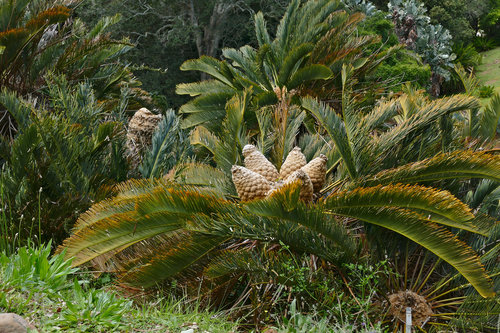
It took placing living cycads into wind tunnels to obtain the first evidence that something strange might be going on with cycad pollination. The small gaps on the female cones were simply too tight for wind-blown pollen to make it to the ovules. Around the same time, researchers began noting the production of volatile odors and heat in cycad cones, providing further incentives for closer examination.
Subsequent research into cycad pollination has really started to pay off. By excluding insects from the cones, researchers have been able to demonstrate that insects are an essential factor in the pollination of many cycad species. What’s more, often these relationships appear to be rather species specific.

By far, the bulk of cycad pollination services are being performed by beetles. This makes a lot of sense because, like cycads, beetles evolved long before bees or butterflies. Most of these belong to the superfamily Cucujoidea as well as the true weevils (Curculionidae). In some cases, beetles utilize cycad cones as places to mate and lay eggs. For instance, male and female cones of the South African cycad Encephalartos friderici-guilielmi were found to be quite attractive to at least two beetle genera.
Beetles and their larvae were found on male cones only after they had opened and pollen was available. Researchers were even able to observe adult beetles emerging from pupae within the cones, suggesting that male cones of E. friderici-guilielmi function as brood sites. Adult beetles carrying pollen were seen leaving the male cones and visiting the female cones. The beetles would crawl all over the fuzzy outer surface of the female cones until they became receptive. At that point, the beetles wriggle inside and deposit pollen. Seed set was significantly lower when beetles were excluded.
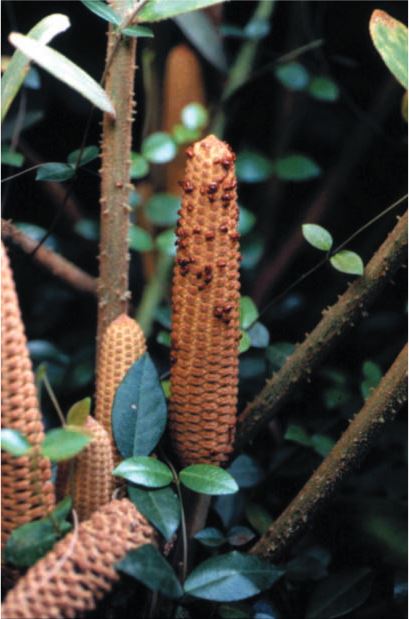
For the Mexican cycad Zamia furfuracea, weevils also utilize cones as brood sites, however, the female cones go to great lengths to protect themselves from failed reproductive efforts. The adult weevils are attracted to male cones by volatile odors where they pick up pollen. The female cones are thought to also emit similar odors, however, larvae are not able to develop within the female cones. Researchers attribute this to higher levels of toxins found in female cone tissues. This kills off the beetle larvae before they can do too much damage with their feeding. This way, the cycad gets pollinated and potentially harmful herbivores are eliminated.
Beetles also share the cycad pollination spotlight with another surprising group of insects - thrips. Thrips belong to an ancient order of insects whose origin dates back to the Permian, some 298 million years ago. Because they are plant feeders, thrips are often considered pests. However, for Australian cycads in the genus Macrozamia, they are important pollinators.

Thrip pollination was studied in detail in at least two Macrozamiaspecies,M. lucidaandM. macleayi. It was noted that the male cones of these species are thermogenic, reaching peak temperatures of around 104 °F (40 °C). They also produce volatile compounds like monoterpenes as well as lots of CO2 and water vapor during this time. This spike in male cone activity also coincides with a mass exodus of thrips living within the cones.
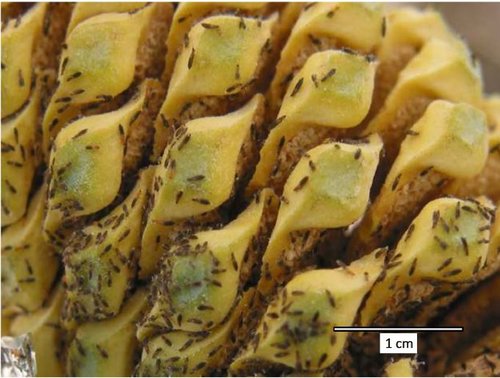
Thrips apparently enjoy cool, dry, and dark places to feed and breed. That is why they love male Macrozamia cones. However, if the thrips were to remain in the male cones only, pollination wouldn’t occur. This is where all of that male cone metabolic activity comes in handy. Researchers found that the combination of rising heat and humidity, and the production of monoterpenes aggravated thrips living within the male cones, causing them to leave the cones in search of another home.
Inevitably many of these pollen-covered thrips find themselves on female Macrozamia cones. They crawl inside and find things much more to their liking. It turns out that female Macrozamia cones do not produce heat or volatile compounds. In this way, Macrozamia are insuring pollen transfer between male and female plants.
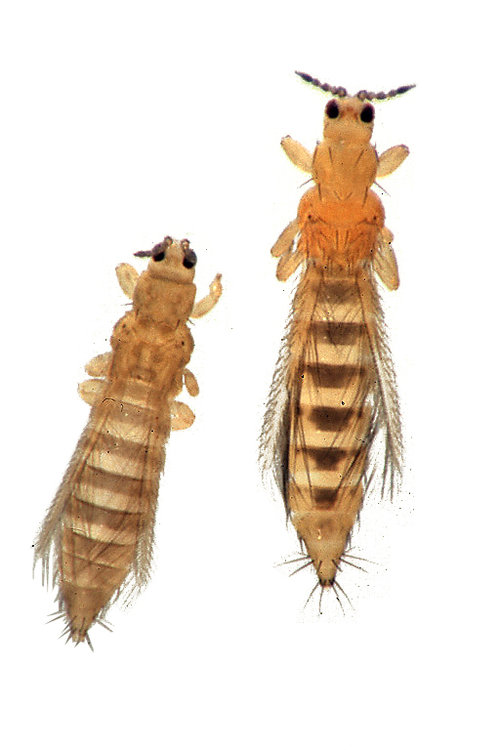
Pollination in cycads is a fascinating subject. It is a reminder that flowering plants aren’t the only game in town and that insects have been providing such services for eons. Additionally, with cycads facing extinction threats on a global scale, understanding pollination is vital to preserving them into the future. Without reproduction, species will inevitably fail. Many cycads have yet to have their pollinators identified. Some cycad pollinators may even be extinct. Without boots on the ground, we may never know the full story. In truth, we have only begun to scratch the surface of cycads and their pollinators.
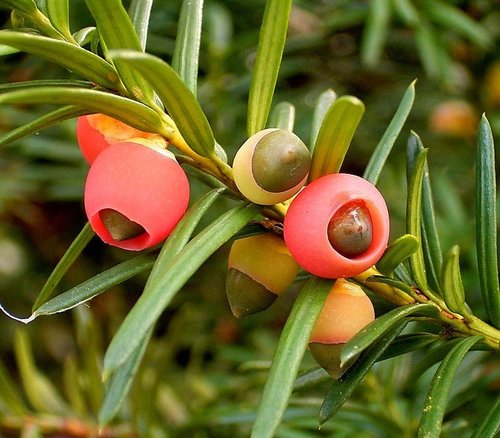
Many of us were taught in school that one of the key distinguishing features between gymnosperms and angiosperms is the production of fruit. Fruit, by definition, is a structure formed from the ovary of a flowering plant. Gymnosperms, on the other hand, do not enclose their ovules in ovaries. Instead, their unfertilized ovules are exposed (to one degree or another) to the environment. The word “gymnosperm” reflects this as it is Greek for “naked seed.” However, as is the case with all things biological, there are exceptions to nearly every rule. There are gymnosperms on this planet that produce structures that function quite similar to fruits.
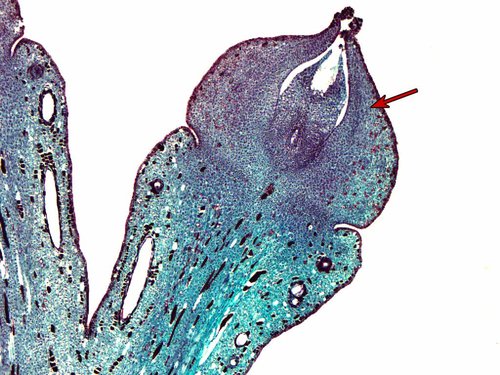
The key to understanding this evolutionary convergence lies in understanding the benefits of fruits in the first place. Fruits are all about packing seeds into structures that appeal to the palates of various types of animals who then eat said fruits. Once consumed, the animals digest the fruity bits and will often deposit the seeds elsewhere in their feces. Propagule dispersal is key to the success of plants as it allows them to not only to complete their reproductive cycle but also conquer new territory in the process. With a basic introduction out of the way, let’s get back to gymnosperms.
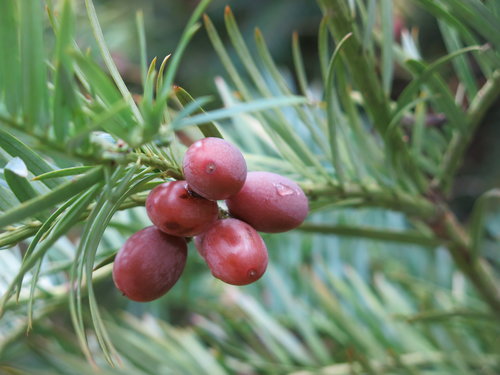
There are 4 major gymnosperm lineages on this planet - the Ginkgo, cycads, gnetophytes, and conifers. Each one of these groups contains members that produce fleshy structures around their seeds. However, their “fruits” do not all develop in the same way. The most remarkable thing to me is that, from a developmental standpoint, each lineage has evolved its own pathway for “fruit” production.
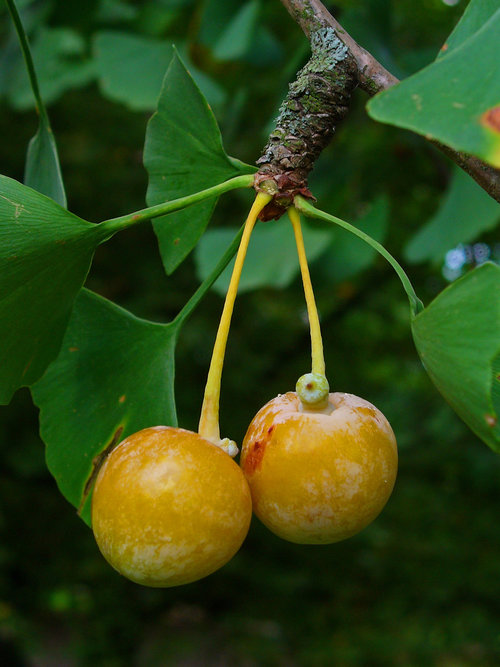
For instance, consider ginkgos and cycads. Both of these groups can trace their evolutionary history back to the early Permian, some 270 - 280 million years ago, long before flowering plants came onto the scene. Both surround their developing seed with a layer of protective tissue called the integument. As the seed develops, the integument swells and becomes quite fleshy. In the case of Ginkgo, the integument is rich in a compound called butyric acid, which give them their characteristic rotten butter smell. No one can say for sure who this nasty odor originally evolved to attract but it likely has something to do with seed dispersal. Modern day carnivores seem to be especially fond of Ginkgo “fruits,” which would suggest that some bygone carnivore may have been the main seed disperser for these trees.
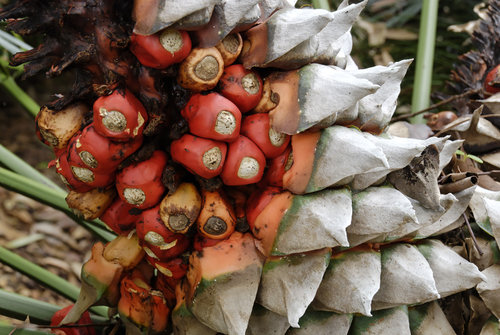
The Gnetophytes are represented by three extant lineages (Gnetaceae, Welwitschiaceae, and Ephedraceae), but only two of them - GnetaceaeandEphedraceae- produce fruit-like structures. As if the overall appearance of the various Gnetum species didn’t make you question your assumptions of what a gymnosperm should look like, its seeds certainly will. They are downright berry-like!
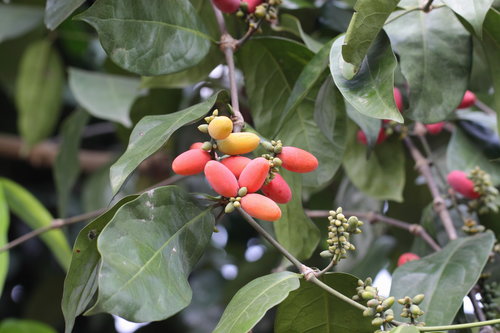
The formation of the fruit-like structure surrounding each seed can be traced back to tiny bracts at the base of the ovule. After fertilization, these bracts grow up and around the seed and swell to become red and fleshy. As you can imagine, Gnetum “fruits” are a real hit with animals. In the case of some Ephedra, the “fruit” is also derived from much larger bracts that surround the ovule. These bracts are more leaf-like at the start than those of their Gnetum cousins but their development and function is much the same.
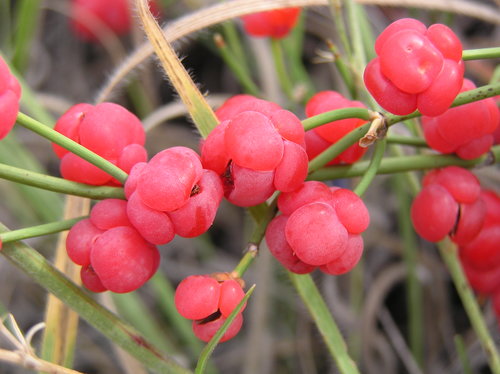
Whereas we usually think of woody cones when we think of conifers, there are many species within this lineage that also have converged on fleshy structures surrounding their seeds. Probably the most famous and widely recognized example of this can be seen in the yews (Taxus spp.). Ovules are presented singly and each is subtended by a small stalk called a peduncle. Once fertilized, a group of cells on the peduncle begin to grow and differentiate. They gradually swell and engulf the seed, forming a bright red, fleshy structure called an “aril.” Arils are magnificent seed dispersal devices as birds absolutely relish them. The seed within is quite toxic so it usually escapes the process unharmed and with any luck is deposited far away from the parent plant.
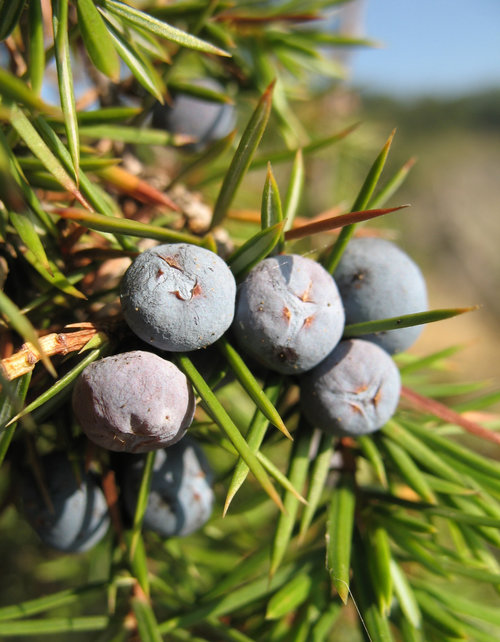
Another great example of fleshy conifer “fruits” can be seen in the junipers (Juniperus spp.). Unlike the other gymnosperms mentioned here, the junipers do produce cones. However, unlike pine cones, the scales of juniper cones do not open to release the seeds inside. Instead, they swell shut and each scale becomes quite fleshy. Juniper cones aren’t red like we have seen in other lineages but they certainly garnish the attention of many a small animal looking for food.
I have only begun to scratch the surface of the fruit-like structures in gymnosperms. There is plenty of literary fodder out there for those of you who love to read about developmental biology and evolution. It is a fascinating world to uncover. More importantly, I think the fleshy “fruits” of the various gymnosperm lineages stand as a testament to the power of natural selection as a driving force for evolution on our planet. It is amazing that such distantly related plants have converged on similar seed dispersal mechanisms by so many different means.
Welwitschia mirabilis
One of the rarest and strangest plants in the world, Welwitschia mirabilis is often referred to as an “underground tree” and can live up to 2,000 years in the arid Namib desert. It’s comprised of two leaves, a stem base and a tap root. The leaves become frayed but never stop growing and never shed, giving the plant it’s Medusa-like appearance. It uses them to collect moisture from sea fog. The long tap root can extend 6ft underground to collect water.
The only member of the Welwitschia genus, it’s thought to be a relic from the Jurassic Period, when the Earth was covered with ferns and gymnosperms, and thus a “living fossil”.
Post link


